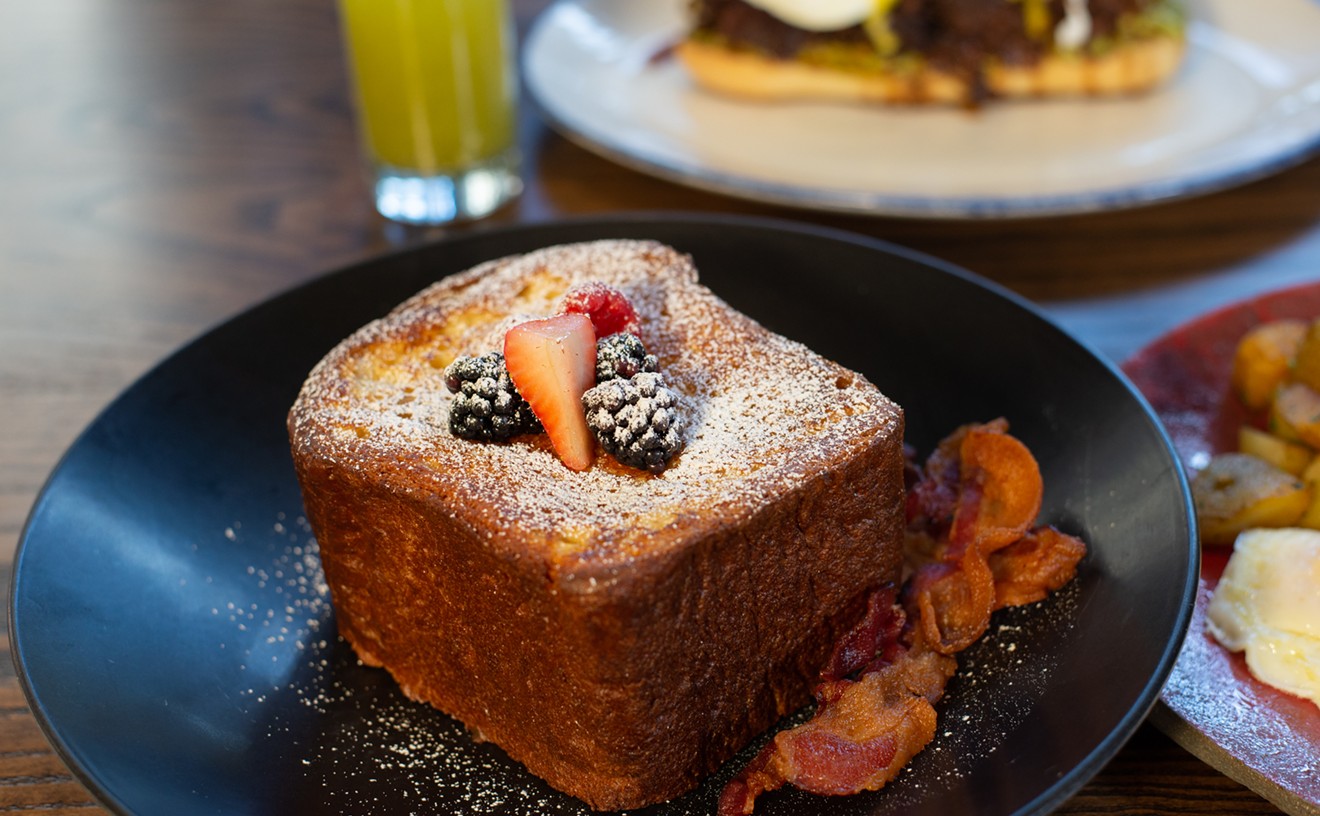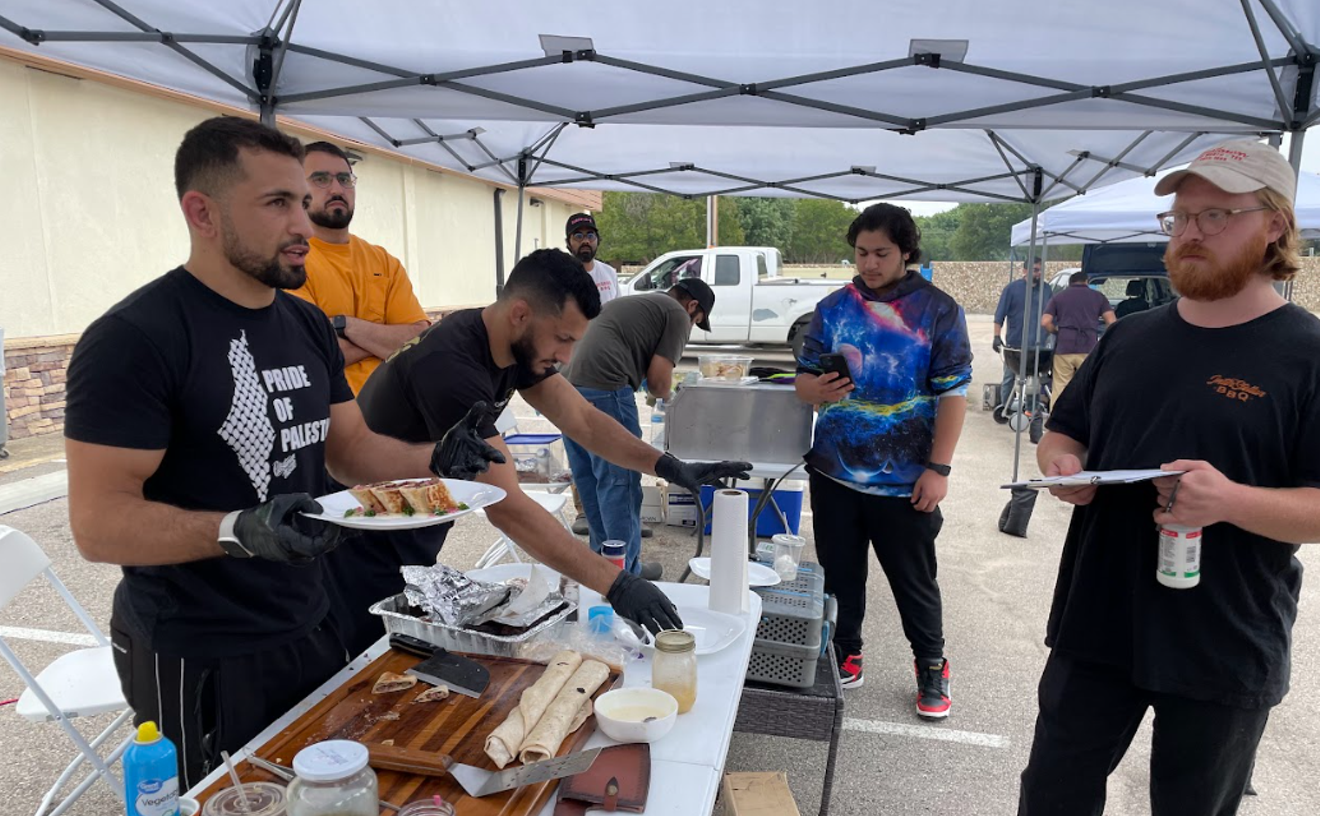I remember my first encounter with truffles vividly, probably because it was a simultaneously euphoric and traumatic experience. I was on a date at Al Tiramisu, a basement Italian restaurant in Washington, D.C., which I picked because I'd gotten a personal email from the chef. White truffles were here, it said, and he was so excited to share them with me. I found out why he was so excited later that night.
We were given a choice of risotto or pasta as a base for the glorious fungus. We both got risotto, and when the bowls of warm rice arrived, our waiter pulled out a pale, lumpy orb the size of a large marble from a wooden box and, with a silver shaver, rapidly sliced the truffle into our bowls.
That's when I started to get nervous.
I knew truffles were expensive, but I wasn't sure how expensive, and I didn't know the etiquette that governed table-side truffle shaving. Was this a similar situation to freshly grated parm or cracked pepper? Should I raise a single finger to indicate that I've had enough?
At the same time, the most amazing aroma was robbing me of every sense but my smell. When the thin shavings of truffle came in contact with the hot rice, they released an olfactory aura that induced an absolute stupor. I sat there paralyzed, trying to formulate a question and forgetting how to string words into sentences. In a flash the entire truffle was gone.
I'm not sure what else we ate that night, but it was modest, and yet I'll never forget the check. After tax and tip I'd spent $450 on that date. And I'll tell you something: It was worth it.
I can count on my hands, without reusing digits, how many times I've had a dish that was that transcendent. I relished every bite like an addict taking a hit on his way to treatment. There was no witty conversation at the table while we cleaned those bowls, just a constant streaming murmur of oh my god oh my god oh my god.
Since that meal I've had fresh truffles incorporated into a handful of meals. They've never invoked quite that visceral reaction as my first encounter, but they've at least been memorable.
Until recently, that is. My recent truffle encounters have left me confused. I had them twice while reviewing Campo, in a gnocchi dish and in beef-heart tartare. Matt McCallister, Campo's young and brash and inventive chef, used a microplane to shave what the menu called simply "black truffles" into thin wisps of hair. But in the finished dishes, they were odorless. I pulled some of the tangle away with my fork and took an entirely tasteless bite.
A couple weeks later, while working on an upcoming review of Private Social, I ordered monkfish with Burgundy truffles, and red wine beurre blanc, as described by the menu. Chef Tiffany Derry had shaved coins of black truffle over the dish. When it arrived, I eagerly took a bite. Nothing.
Now I was worried my palate was broken. I picked up a single slice of the truffle, put it on the back of my hand, held it up to my nose and inhaled deeply. If I detected any odor at all it was that of a freshly sliced button mushroom. It was fungal and damp, but completely devoid of that musky, pungent aroma that makes truffles the most prized, and most expensive, ingredient in modern dining.
After that first experience with truffles years ago, I swore off truffle oil, the chemically produced bastard sibling to the true truffle, and I'd joined other food writers in lamenting its over-use. Now, after my odorless bump at Private Social, I was starting to question myself. If the truffles I'd been eating in Dallas were representative of fresh, good product, I might actually prefer truffle oil. Something had to be wrong.
Then someone mentioned the recent 60 Minutes piece describing the infiltration of Chinese truffles into the European market. The substandard Chinese truffles, previously used for pig feed, have been making their way into French and Italian markets as an imposter, CBS reported. Vendors mix them in with batches of real European truffles like coke dealers cut their products with lesser stimulants. According to truffle exporters interviewed, up to 30 percent of the truffles they handle are bogus. Could those duds be making their way to Dallas?
I called Matt McCallister and asked him about his truffles. He told me comparing the black truffles to white isn't really fair. They're completely different ingredients, he said. And he's right. White truffles produce more of an aromatic experience; you almost taste them with your nose. Black truffles are more understated. Still, both truffles should result in impressive dishes.
McCallister gets his truffles from Mikuni Wild Harvest, a specialty foods vendor focused on wild foraged foods. I asked co-owner Tyler Gray if he'd ever heard of Chinese truffles. He had, but he assured me that the inferior product had never been sold at his store. Gray cited his 10-year relationship with some of the nation's finest chefs and foragers, and assured me his product was sound. "It really comes down to knowing and trusting your purveyors," he said. Gray also told me there was no way Private Social was serving Burgundy truffles. Otherwise known as summer truffles, their season had long ended.
Chef Tiffany Derry seemed confused when I called to ask her about her truffles. She needed to check with her buyers, she said, and soon after got back to me over email. "Winter Perigold Truffle from Burgundy," she wrote. That makes her menu reference to Burgundy truffles a little misleading, perhaps, but not sinister. Semantics aside, though, they were still tasteless.
It turns out McCallister's truffles were likely lifeless because they were getting old -- Gray told me chefs shouldn't hang on to fresh truffles for more than five days -- and they were used improperly. According to Gray, the black varieties are best when cooked into dishes like polenta and risotto. The flavor becomes much more pronounced when heated.
The truffles at Private Social suffered the same fate. Shaved over a finished dish, black truffles never realize their full potential, even if they're freshly dug from the French countryside. While a reputation for high cost makes the appearance of truffles on a menu seems like a luxury, that decadence is only real when a chef uses them quickly and cooks with them properly.
Freshness and pedigree aside, these truffles were simply misused -- a disappointment, since the finished dishes don't convey the real character of what is one of the world's most alluring ingredients. Bottom line for diners? Don't be seduced by truffles of any sort, unless their aroma seduces you first.










